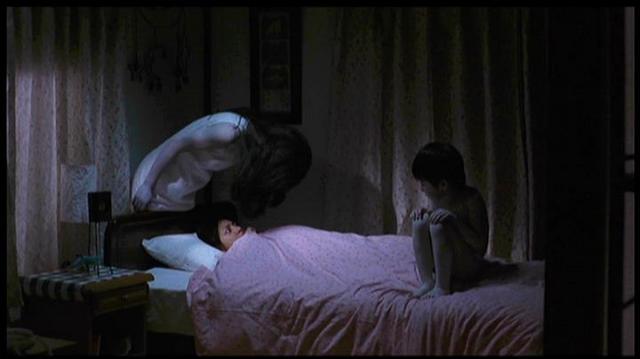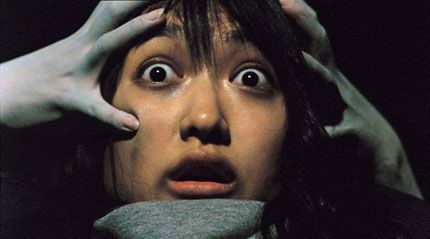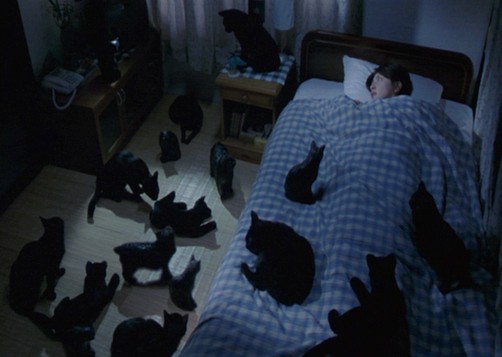 |
| http://www.ultimonivel.net/wp-content/uploads/2009/10/Ringu_DVD.jpg |
Plot summary
 |
| http://2012yearof365movies.files.wordpress.com/2012/08/well.jpg |
A Japanese reporter looks into a story of a
videotape which apparently kills whomever has watched it precisely one week later. Watching the tape herself, abnormal events take place, so the reporter and her ex-husband put their differences aside to solve the curse of this videotape.
What (if any) are the differences to American and European horror films?
***NOTE - to prevent repeating myself on certain differences, I will be elaborating on differences I have not yet brought forward and listing previously mentioned differences that I have noticed again in this film below in bullet point form***
First of all, straight away, I noticed that the storyline to this horror title involved a child in some way, I have seen American horror films that use children central to the development of the plot such as
The Omen (1976) and
The Exorcist (1973), however, seeing as this film is the second Japanese horror film I have viewed, the odds of a child character being used as a plot device are very slim indeed. Next, a smaller trivial element, but for the second time I noticed that the female antagonist was wearing white clothing and had pale skin.
Like
Ju-on: The Grudge (2002), the antagonists were more or less visible when they appeared but the mother character had her face covered by her hair at certain points, the female antagonist in this film does the same, using her hair to cover her face and thus, preventing the audience from seeing what she looks like. For the first time in the two Japanese horror films I have watched, a male character received almost equal screen time as the female main character/protagonist, however, he was definitely a secondary character because his role portrayed him as some kind of helper or side-kick and sometimes motivator to the main character/protagonist. Special effects were used minimally, more than often to portray the dramatic and stormy changes in weather. Like Wes Craven's
Scream (1996), phones are used as a plot device, however, beyond usage to develop the plot, there were constant appearances or sequences displaying people using mobile phones.
 |
| https://blogger.googleusercontent.com/img/b/R29vZ2xl/AVvXsEhIaNtFmGf97W045Dw8Rka9N4LTv6iIsKvcTfvYcSKO8WC4CtHix9c-z9Iwf51SH3xLf9IUoI23k2JSEXHFArLbFVYNZO6XQcbynL6nG-1I63ZyMV4wWE113B3nwOe9enuHaUvHMF649hc/s1600/84DC8F4039.jpg |
Some male characters in this film were rather stale, displaying next to no emotions or concern for other characters. During conversations between certain characters, there were long pauses in the dialogue, perhaps to make the conversations more dramatic. To contrast with the emotionless performances of some of the male characters, the female protagonist's performance was very emotional and dramatic, which at times was somewhat over-the-top. The ending of this film projects the idea that the curse has been lifted, but just like
Ju-on: The Grudge (2002), the curse is still present and somebody or everybody awaits an inevitable fate.
Previously mentioned, discovered again in this film:
- Female character(s) usage - protagonist and antagonist are female
- Focus/attention needed - plot requires constant focus and attention to keep up and fully understand
- Curse - the plot circles around a curse of sorts, someone has died in the past and is now killing the living
- Grey - a heightened grey-scale made the entire aesthetic of this title somewhat more visually grey
- Sound - audio is used more effectively to reinforce the atmosphere of horror and drive suspense
- Unique sounds - a unique noise/sounds are used to depict the presence of the antagonist(s)
- Visual gratuity - there was little or no use of blood, violence or gore in this film
- Scary - more frequent moments using scary images or visual sequences rather than shocks
- Focus - cameras are focused on the point of interest and does not suddenly change
- Inconclusive - the ending to this film was inconclusive and/or left unanswered questions relevant to the plot
Were there any cultural differences in this film?
***NOTE - to prevent repeating myself on certain differences, I will be elaborating on differences I have not yet brought forward and listing previously mentioned differences that I have noticed again in this film below in bullet point form***
Once a character met their fate, a funeral was held to honour their memories, however, those paying their last respects would kneel instead of standing or sitting down. I am uncertain on what the law states in Japan, but one scene during this film required a child to remain at home alone for large time periods, making me realise that this child was left supervised and it did not seem to really bother the mother, the child or anyone else. The protagonist's son is fishing with his grandfather, the difference being that this act was carried out using just a net. Upon entering people's homes, characters remove their shoes as a sign of politeness and manners.
Previously mentioned, discovered again in this film:
- Wood - the majority of any building interiors or exteriors were made using wooden materials
- Colours - brown and white are favoured colours for building interiors
- Furniture - interior setting furniture appeared smaller and/or lower to the ground
- Design - the design of the buildings (interior & exterior) are different to traditional western designs
- Spotless - exterior streets and buildings are spotless and litter free
- Bowing - characters bow when introducing themselves or displaying gratitude
- Titles - characters refer to each other by their correct titles i.e. Mr, Mrs, Miss, etc
What evidence is there that this horror title is critically acclaimed?
'Now
Ringu is here, on a DVD that gives this low-budget cult shocker the class-A treatment it deserves.' (Peter Travers, Rolling Stone)
'It's cunning slow-burn, and once the two creepy pay-offs arrive, thick
with inky shadows and insidious sounds, all the more potent for it. A
sure, stealthy shocker which certainly primes you for the sequel.' (Total Film)
'Yet "Ring" is no heavily-plotted, race-against-time, action thriller but an expertly controlled psychodrama
in which much of the film's pulse comes from the sound of silence, and
much of that springs from the characters' contemplation and gestures.
Subtly expressive faces and spooky interiors are the order of the day in
this original, powerful treat.' (Michael Thomson, BBC)
'Ring has indescribably disturbing moments that frightened me out of my
wits. But like many of the Japanese horrors that followed, it sometimes
has an elliptic and confusing storytelling style that can make
plot-progression muddy. A real chiller, though.' (Peter Bradshaw, The Guardian)
Are there any atmospheric projections, feelings and moods evoked or symbolisation in this film?
As mobile phones are constantly used in this film, one may think this has been used to symbolise society's obsession for technology. The home in which the protagonist and her ex-husband find the original grave of the cursed being is located in the woods, projecting a successful isolated atmosphere. A volcanic eruption took place at a certain point in history within this film's storyline and there was a local woman who predicted this event, however, she was said to have thrown herself into the volcano, suggesting themes of suicide and mortality.
A scene features this gifted local woman character at a press conference in which she displays her talents. What drew my attention to this scene was the fact that all the press members were male, perhaps symbolising sexism in employment. The antagonists
grave is a well, located beneath the wooden house in the woods
highlighting themes of neglect and evoking feelings of uncertainty and
anticipation.
 |
| http://ringufan.intelligent-light.com/images/Ryuji%20in%20the%20well.jpg |
When looking
for the body of the cursed being, feelings of hopelessness are evoked as
it seems the body can't be found to lift the curse.
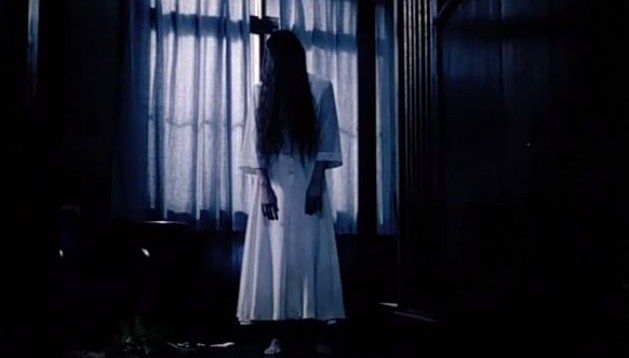 |
| http://twscritic.files.wordpress.com/2012/08/ringu-girl.jpg |
As the antagonist's face is covered by her hair, self-concious feelings of insecurity are evoked.
What relevance does this research have towards the development of my project?
This research helps me continue my understanding of Japanese horror and the unique characteristics that surround it. As the second Japanese horror film I have watched, a pattern appears to be evolving, helping me recognise similarities between different titles and preparing me in advance to look out for elements in other titles that I will be watching
.
Resources:
http://www.rollingstone.com/movies/reviews/ringu-20030225
http://www.totalfilm.com/reviews/cinema/ring
http://www.bbc.co.uk/films/2000/08/16/ring_review.shtml
http://www.guardian.co.uk/film/2008/oct/31/ring











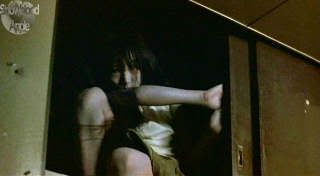






.jpg?partner=allmovie_soap)
%5B1%5D.jpg)

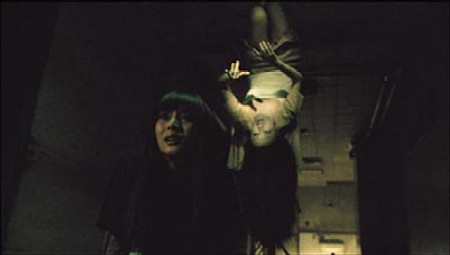
/_derived_jpg_q90_410x410_m0/OneMissedCall2003-Still1.jpg?partner=allrovi.com)






